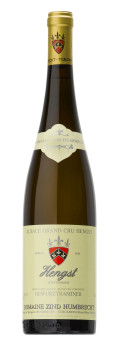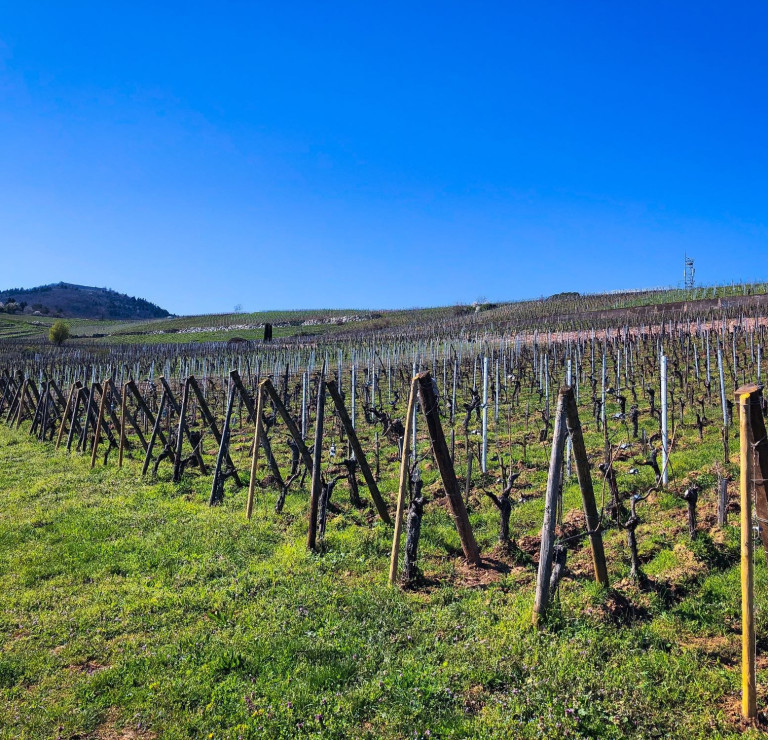
Technical presentation
| Bottling : | September 2014 |
|---|---|
| Acquired alcohol : | 13.5° |
| Residual sugar : | 45.0 g/l |
| Total acidity : | 3.0 g/l H2SO4 (4.5 g/l Acide Tartrique) |
| pH : | 3.7 |
| Yield : | 17 hl/ha |
| Optimum tasting : | 2018-2038+ |
| Average age of vines : | 62 years |
| Terroir : | Grand Cru Hengst |
| Sweetness index : | 5 |
| Soil : | , , Calcareous Marl from the Oligocene period |
Description of the wine Gewurztraminer Grand Cru Hengst 2013
The Hengst Grand Cru is located just south of Wintzenheim on an imposing marl-limestone hillside, facing south-east on an average slope (30%). There are significant variations on this 53ha Grand Cru but the middle of the Hengst, where our two very old vineyards are located, is definitely capable to produce amongst the best and most classic Gewurztraminer in Alsace. Hengst soil is composed of Oligocene red marl and calcareous deposits with a relatively thin top soil (30cm). Roots have the possibility to go deep into the aggressive high free lime content soil. It is located in an early ripening area. However, even if the Hengst is often ripe early, the grapes can be picked late. It creates a unique combination of high ripeness and mineral expression. The 2013 kept a relatively high residual sweetness, in proportion to the ripeness level.

Tasting notes
03/2015 : Light gold colour. Great complex spicy nose. It is actually quite difficult to express with words the difference between an aromatic vulgar and an intense complex Gewurztraminer like here. Both nose and mouth give a sensation of satisfaction and contempt! The spicy aromatics (pepper…) eventually develop into stony flavours. The texture is velvety and round but the sweetness is never overpowering the wine. Long and elegant finish.

The Hengst Grand Cru of Wintzenheim
The Hengst was first mentioned in the 9th century in an endowment of the Murbach Abbey. The lord of Haut Landsbourg as well as the bailiff of Kaysersberg shared the feudal rights up to the Great Revolution, whilst various noble families, abbeys and the bourgeoisie of Colmar exploited important parcels.